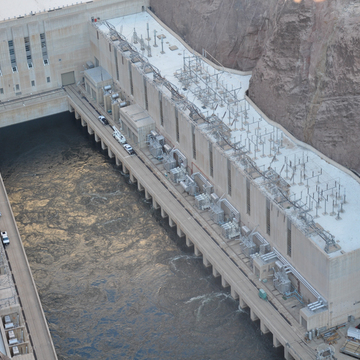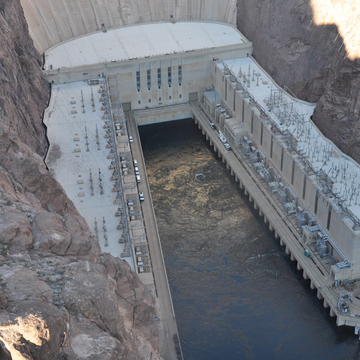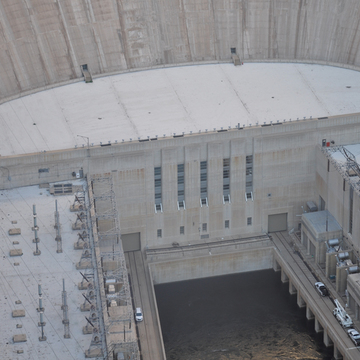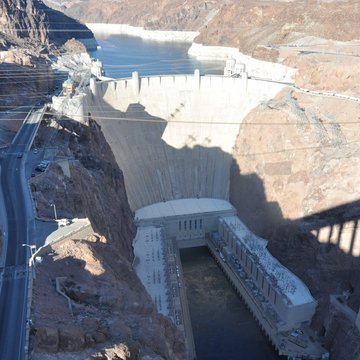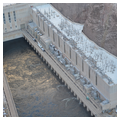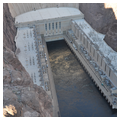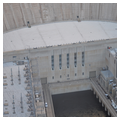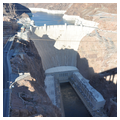You are here
Los Angeles Department of Water and Power Building (Los Angeles Bureau of Power and Light Administrative and Maintenance Building)
The Los Angeles Department of Water and Power (LADWP), today the largest municipally owned utility in the nation, was one of two companies that operated power generators at Hoover Dam (the other was Southern California Edison). From 1936 to 1987, the Bureau of Reclamation contracted with the LADWP to run thirteen of Hoover Dam's generating units to supply power to southern California, Arizona, and Nevada. In the 1930s and early 1940s, the dam supplied nearly 75 percent of Los Angeles's power; by 1987 it supplied only 5 percent, as the city had turned to other sources of electricity. The LADWP's role in operating a part of the dam's power plant required a physical presence in Boulder City, represented by its administrative building.
The building, on a wedge-shaped corner lot along the main thoroughfare, is eclectic in its sources of design. An octagonal tower topped by a faceted sphere anchors the building at the corner; two one-story wings radiate along the street sides of the lot. Concrete blocks held together with thick, dripping mortar give the walls a rustic appearance. A paneled door leads into a lobby with a colorful tiled floor. Behind the lobby stands a large auditorium with exposed wood beams.
When the LADWP's contract ended in 1987, the Lower Colorado Regional Office of the Bureau of Reclamation took over all aspects of operation at Hoover Dam's power plant, and the LADWP vacated the building. In 1995, the city of Los Angeles turned over ownership of the building to Boulder City, which uses it for community functions.
Writing Credits
If SAH Archipedia has been useful to you, please consider supporting it.
SAH Archipedia tells the story of the United States through its buildings, landscapes, and cities. This freely available resource empowers the public with authoritative knowledge that deepens their understanding and appreciation of the built environment. But the Society of Architectural Historians, which created SAH Archipedia with University of Virginia Press, needs your support to maintain the high-caliber research, writing, photography, cartography, editing, design, and programming that make SAH Archipedia a trusted online resource available to all who value the history of place, heritage tourism, and learning.

